Best
Mandolin for Beginners
-
Overall: Solid Even Tone Across the Frequency Range
-
Best Feature: Gloss vintage sunburst finish with engraved tailpiece
-
TedScore™: 9/10
Best
Banjo for
Beginners
-
Overall: Sturdy composite rim and maple neck
-
Best Feature: High-precision components like geared tuning machines
-
TedScore™: 9/10
Best
Banjo for Intermediates
-
Overall: Laminated mahogany body and matte neck finish
-
Best Feature: Immaculately built with nickel plated hardware
-
TedScore™: 9/10
I have both a mandolin and a banjo, which made me curious—what’s all the excitement about the Mandolin vs Banjo comparison?
As a musician, I’ve plucked my fair share of strings, and let me tell you, choosing between these two instruments is like picking your favorite spice in a curry—it adds a distinctive flavor to your music.
With its elegant, curved body and silvery strings, the mandolin offers a gateway to diverse genres, allowing me to strum through anything from classical to bluegrass. On the flip side, with its distinct twang, the banjo gives tunes a bubbly burst of Southern charm.
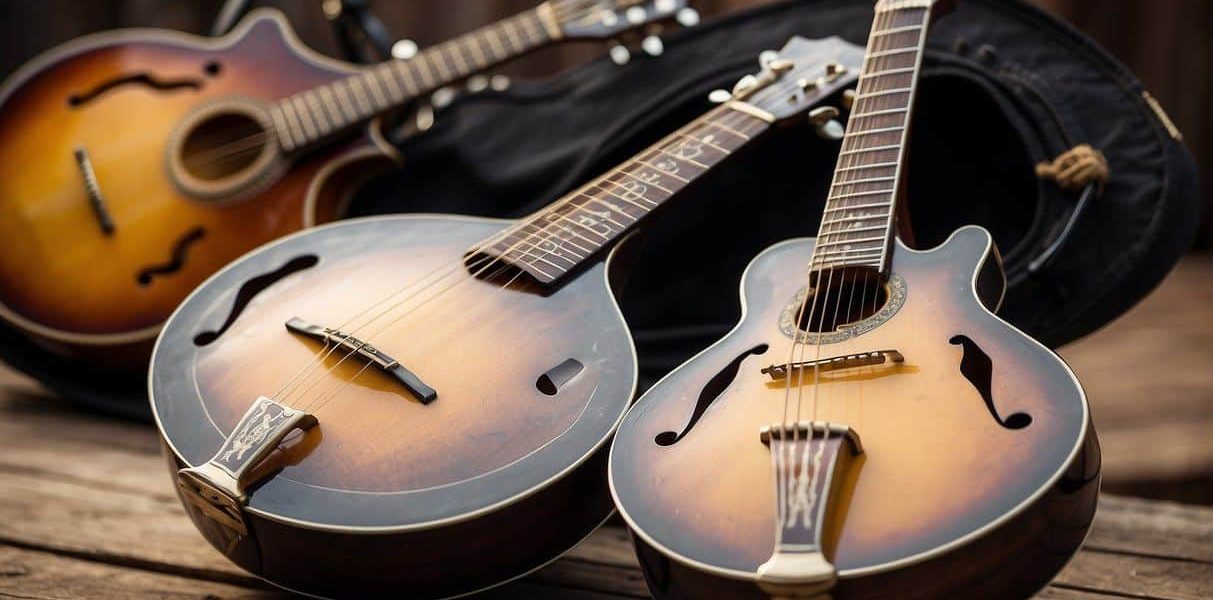
Choosing between them isn’t just about the sound—it’s about which vibe you want to channel into your musical journey.
If you’re contemplating which stringed delight to pick up next, look no further.
By the end of this article, you’ll be all set to choose whether the bright twang of the banjo will win your heart or the mandolin’s lyrical charm will enchant you.
Design and Physical Characteristics
I’m about to guide you through a tour of the mandolin and banjo, looking closely at their construction. It’s like getting to know two characters in a story – each has its own style and body.
Mandolin Construction

My mandolin is quite the eye-catcher, with its wooden body carved into a whimsical teardrop shape.
This elegant form cradles eight steel strings that dance above the fretboard, waiting for a musician’s touch. These strings are neatly arranged in pairs, known affectionately as ‘courses,’ which gives my mandolin a distinctive chime and shimmer.
The neck of the mandolin is a slender runway for the fingers, leading to a headstock that holds the tuning pegs. Shaped for comfort and speed, it allows for fast, playful melodies that can zip across genres from folk to classical.
And let’s remember the ornate, scrolled curves some mandolins flaunt, lending artistic flair and acoustic verve.
Banjo Construction
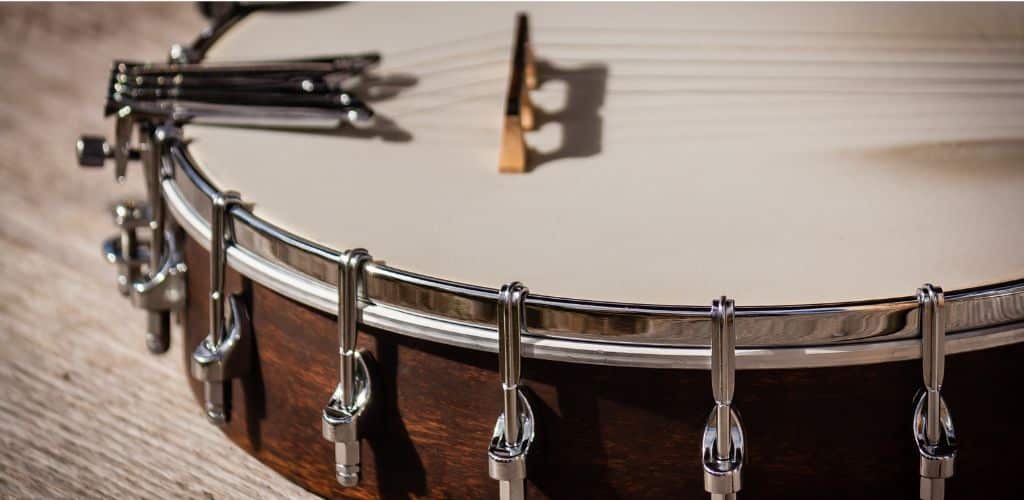
Let’s swing over to my banjo, an instrument with a jolly old spirit and a drum-like resonance. Its circular pot, akin to a drum, sports a taut skin or synthetic head that bestows upon the banjo its robust, twangy voice.
This setup is the heart of the banjo’s design and what makes it resonate like no other instrument in my collection.
With its neck firmly gripping four, sometimes five, strings, the banjo is often the life of the musical party. The strings stretch over a fretted neck that’s usually a smidge more comprehensive than my mandolin’s, giving players more room to maneuver.
Playing the banjo is like tickling the ivories because of its rhythmic punch and vivacious charm.
So there you have it: two distinct characters with bodies and necks chalk and cheese from each other, yet both with a unique ability to captivate and enchant.
Sound, Tuning, and Playing Techniques
Exploring string instruments, the mandolin and banjo have their special sounds. Let’s take a closer look at how they sound, how they’re tuned, and the different ways they’re played.
Mandolin Sound and Tuning
The mandolin’s sound is enchanting, with its crisp and bright tone that slices through any musical ensemble.
It boasts a high-pitched, clean twang thanks to eight strings typically tuned in pairs to G-D-A-E, resembling a violin. This instrument sings with a sustained, melodious chime when I gracefully strum or tenderly pluck its strings with a pick.
In my hands, tuning a mandolin feels like fine-tuning a piece of art. Each string pair is tuned in unison, and that consistency is key for ensuring the mandolin’s distinct voice stands out.
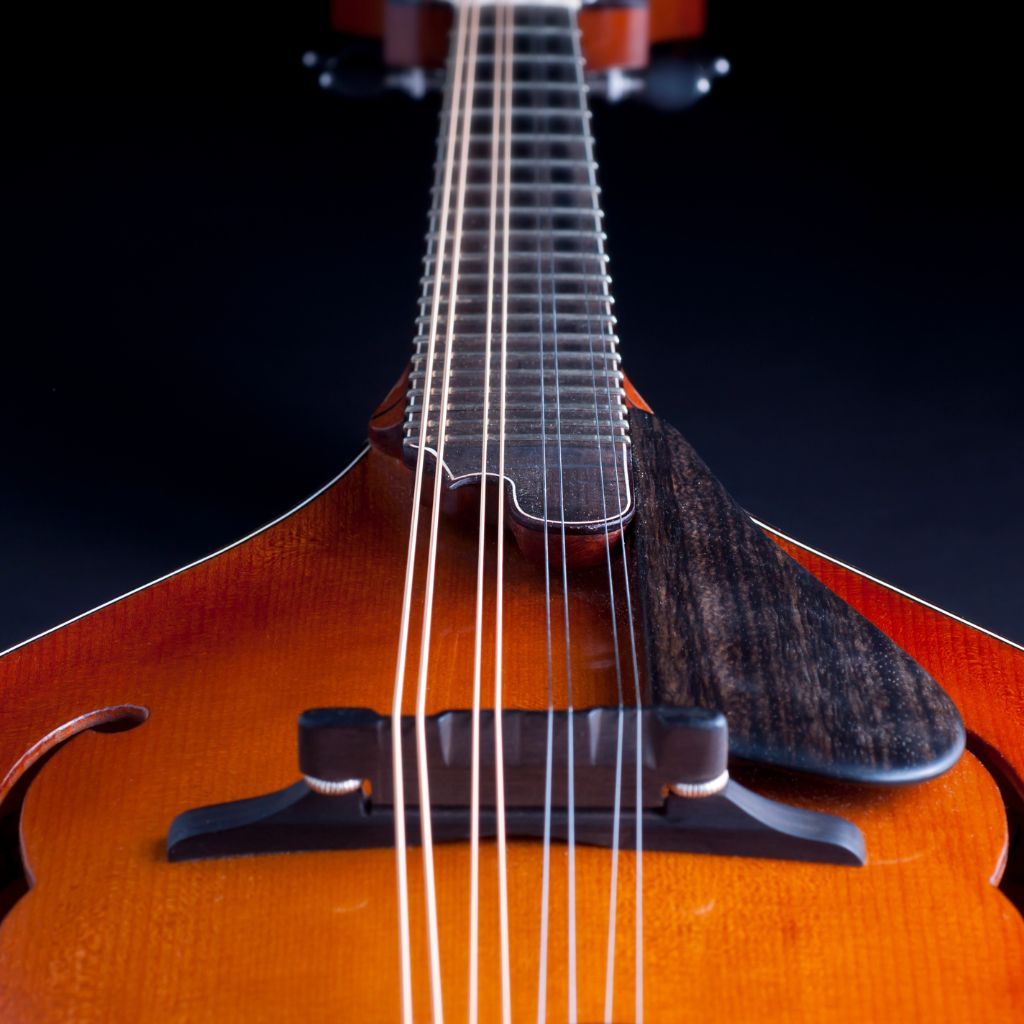
Banjo Sound and Tuning
On the flip side, the banjo dons a resonating drum-like body that gives it a loud, rich, and vibrant sound. The sound can range from a deep, throaty growl to a jubilant, ringing twang, all thanks to the tone ring sitting prettily under the skin.
A banjo typically comes with four or five strings, with the most common tuning being open G for the five-string variety.
If I’m in for a deep rumble or a joyous jangle, I’ll give the banjo’s strings a good strum, letting the tone ring work magic to produce that iconic southern twang.
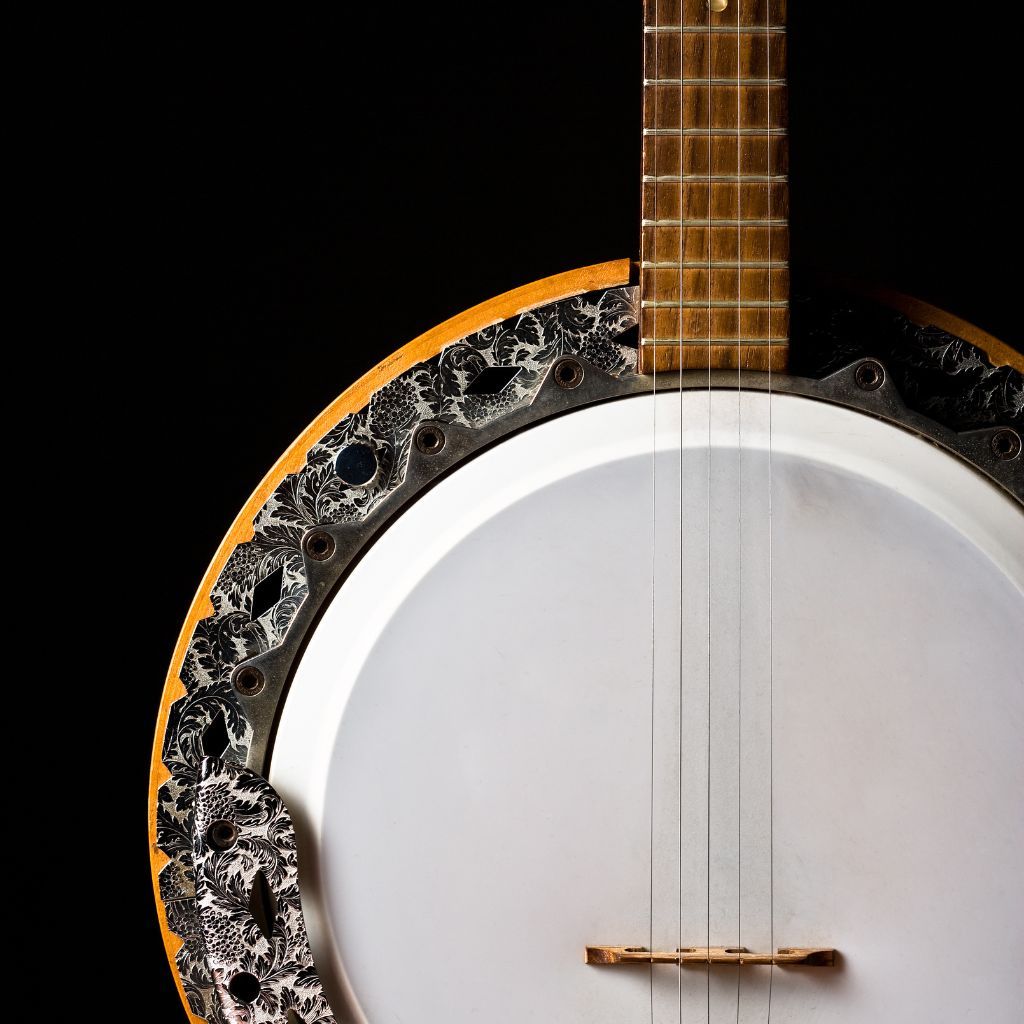
Additionally, the acoustic guitar and violin sheet music are integral components of classical music, renowned for their expressive melodies and rich harmonies.
In recent years, the banjo has also found its place in classical compositions, adding a unique and compelling dimension to orchestral arrangements.
As musicians continue to explore the potential of diverse musical instruments, the fusion of the acoustic guitar, violin sheet music, and banjo in classical music showcases the enduring evolution and innovation within the genre.
Playing Styles
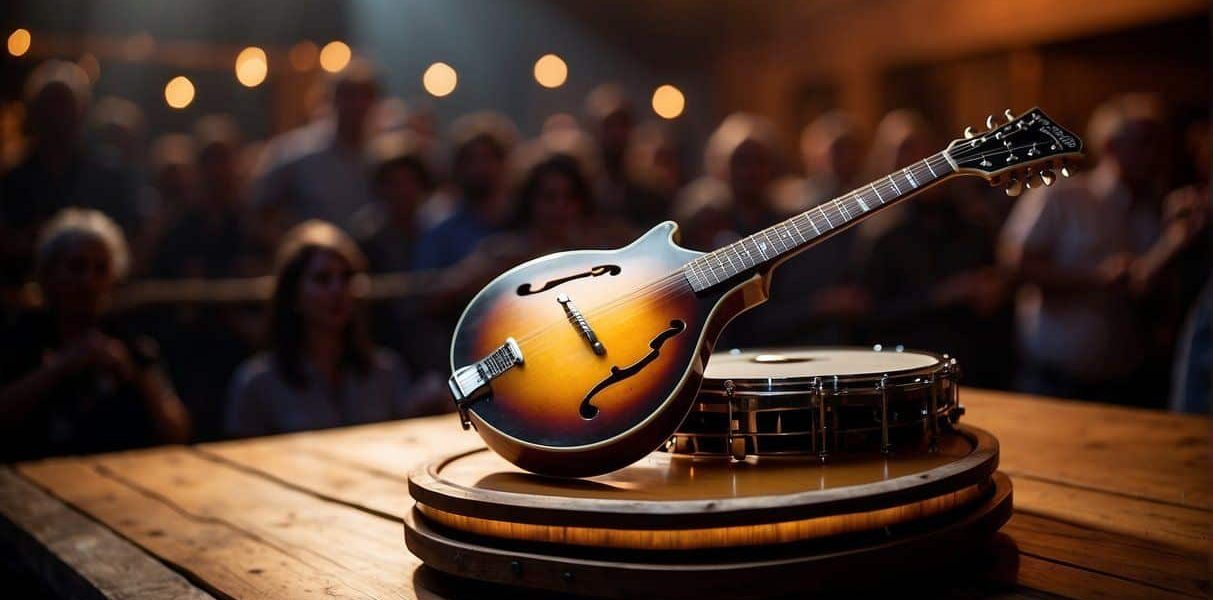
I adore the versatility of mandolin playing styles, which can sway gently from rapid tremolo picking to lively, syncopated rhythms.
Whether through deft fingerpicking or the bold strokes of a pick, the mandolin responds with precision to my touch, allowing for various expressive techniques.
While cruising through banjo playing styles, I’ve tapped into the soulful claw hammer technique and the intricate fingerpicking style, often using metal or plastic fingerpicks.
By striking the strings downward with the back of my fingers and catching the fifth string with my thumb, the claw hammer style gives me a rhythmic and organic texture that’s simply captivating.
Different Kinds of Banjo and Mandolin
With its distinct sound and tuning, the tenor banjo has carved its place in various musical genres, including classical music.
Its unique timbre complements the acoustic guitar and can add depth to classical compositions.

Meanwhile, the soprano banjo, like the banjo mandolin, offers a bright and lively tone, making it a versatile addition to ensembles.
As musicians explore the boundaries of traditional instruments, the banjo’s presence alongside the acoustic guitar and violin sheet music continues to enrich the world of classical music, demonstrating the enduring adaptability of musical instruments.
Best Banjo Recommendation
Gold Tone AC-1 5 String Openback Banjo
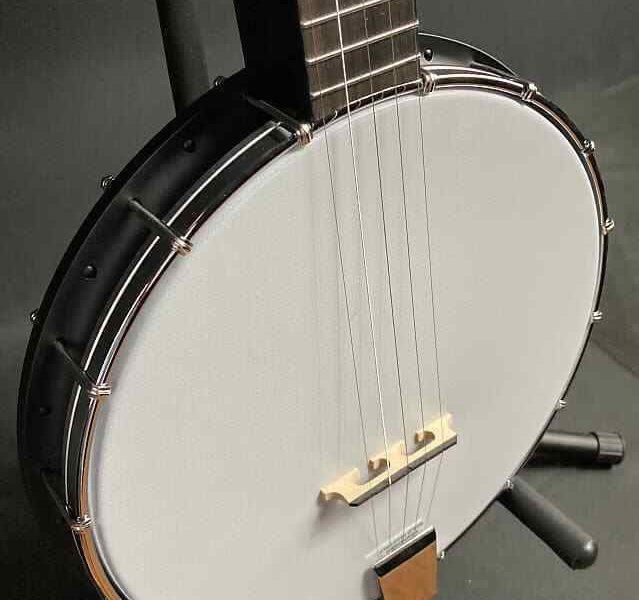
The Gold Tone AC-1 5 String Openback Banjo features a composite rim and a slim, comfortable neck, providing a lightweight yet durable instrument with a bright, clear tone.
Its affordable price and easy playability make it an excellent choice for beginners and those seeking a reliable travel banjo.
Gold Tone AC-1 5 String Openback Banjo

FEATURES: Sturdy composite rim and maple neck
OTHER INFO: Highlighted by a rosewood fingerboard and remo head
- High-precision components like geared tuning machines
- Affordable price compared to other high-quality banjos
- Lightweight and easy to handle, making it great for beginners
- Durable construction with a classic look
- Bridge and tailpiece may need upgrading for better performance
- Limited customization options compared to higher-end models
When you click ‘Check Price’, you’ll see there are loads of great places to buy this item. Our personal favorite is Sweetwater for the US, and Thomann and Gear4Music for the UK & Europe.
They are the largest music retailers, with excellent customer service, competitive prices, really fast shipping, and the longest guarantees.
The professional musician who wrote this article combined many things,
from the product build, manufacturer’s reputation through to feedback
from other users, to create our famous TedScore™.
Fender PB-180E Banjo
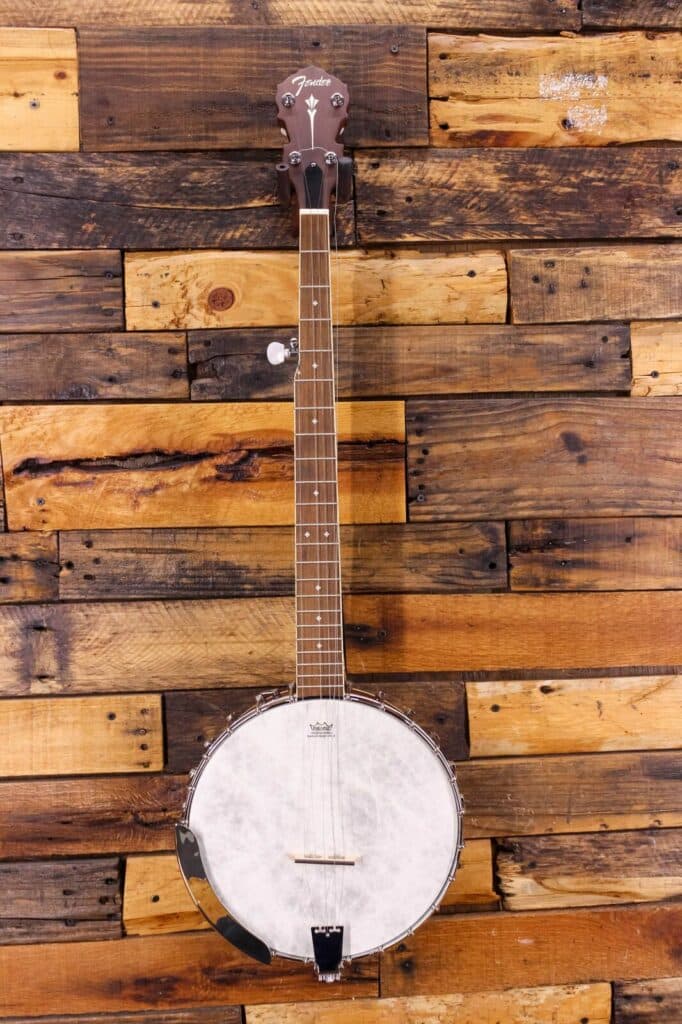
The Fender PB-180E Banjo features a mahogany resonator and neck, along with a Remo head, delivering a warm, resonant tone with excellent projection.
Its built-in pickup and convenient on-board controls make it perfect for both acoustic and amplified performances, offering versatility for various playing environments.
Additionally, its comfortable neck profile and smooth playability make it an ideal choice for both beginners and experienced players.
Fender PB-180E Banjo
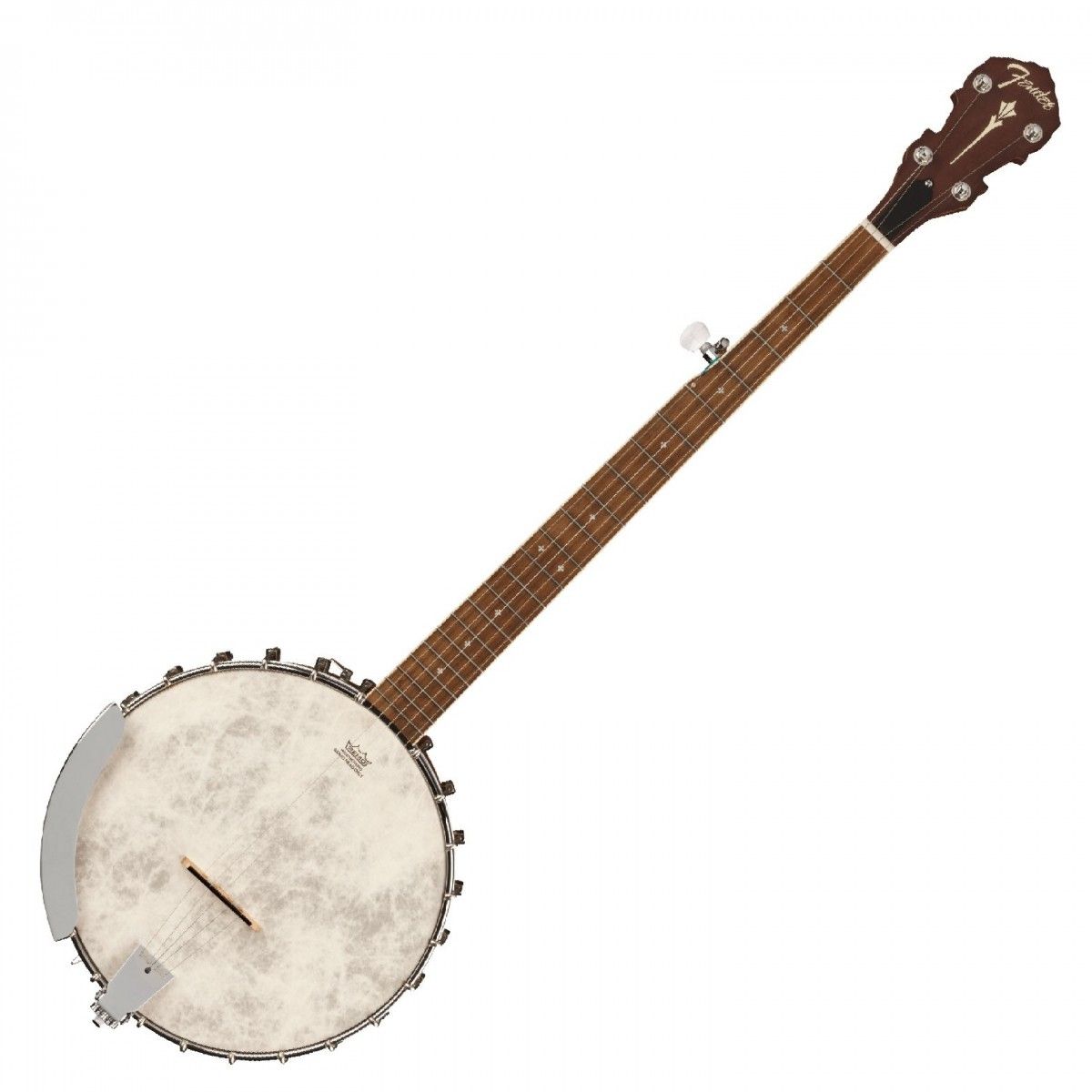
FEATURES: Laminated mahogany body and matte neck finish
OTHER INFO: Immaculately built with nickel plated hardware
- Open back banjo designed
- Quality construction and durable materials
- Built to handle even the most chaotic front-porch jams
- Require experienced setup for optimal playability
- The historic design may be too niche for some
When you click ‘Check Price’, you’ll see there are loads of great places to buy this item. Our personal favorite is Sweetwater for the US, and Thomann and Gear4Music for the UK & Europe.
They are the largest music retailers, with excellent customer service, competitive prices, really fast shipping, and the longest guarantees.
The professional musician who wrote this article combined many things,
from the product build, manufacturer’s reputation through to feedback
from other users, to create our famous TedScore™.
Best Mandolin Recommendation
Mandolin by Gear4music
The Mandolin by Gear4music in Vintage Sunburst features a spruce top and mahogany back and sides, delivering a bright, resonant tone with excellent projection.
Its attractive finish, comfortable neck, and affordable price make it an ideal choice for beginners and hobbyists seeking a quality instrument.
Mandolin by Gear4music
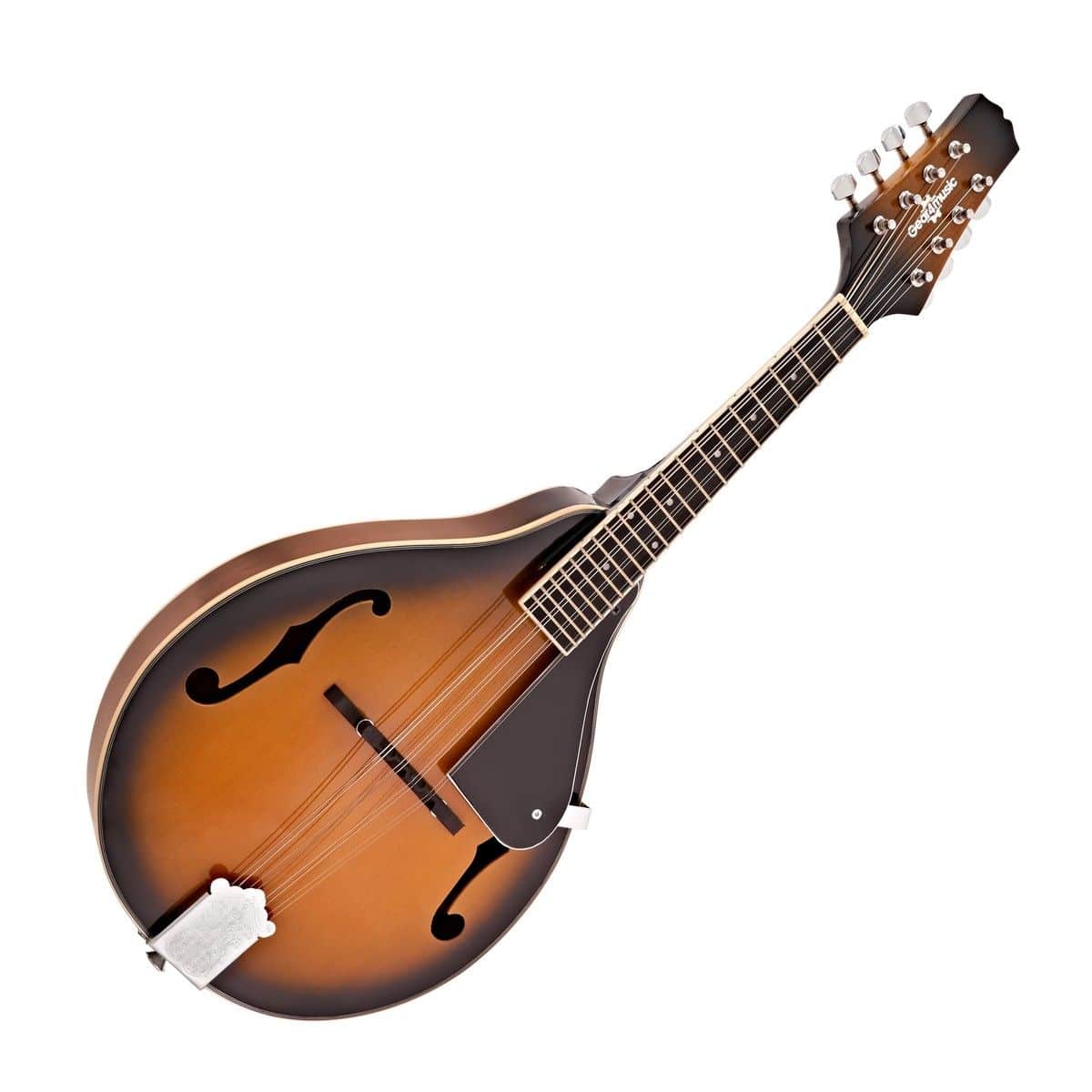
FEATURES: Solid Even Tone Across the Frequency Range
OTHER INFO: Gloss vintage sunburst finish with engraved tailpiece
- Height adjustable bridge
- Limited tonal range compared to higher-end models
When you click ‘Check Price’, you’ll see there are loads of great places to buy this item. Our personal favorite is Sweetwater for the US, and Thomann and Gear4Music for the UK & Europe.
They are the largest music retailers, with excellent customer service, competitive prices, really fast shipping, and the longest guarantees.
The professional musician who wrote this article combined many things,
from the product build, manufacturer’s reputation through to feedback
from other users, to create our famous TedScore™.
Epiphone MM-30S A-Style Mandolin Antique Sunburst
Lorem ipsum dolor sit amet, consectetur adipiscing elit. Ut elit tellus, luctus nec ullamcorper mattis, pulvinar dapibus leo.
Epiphone MM-30S A-Style Mandolin Antique Sunburst
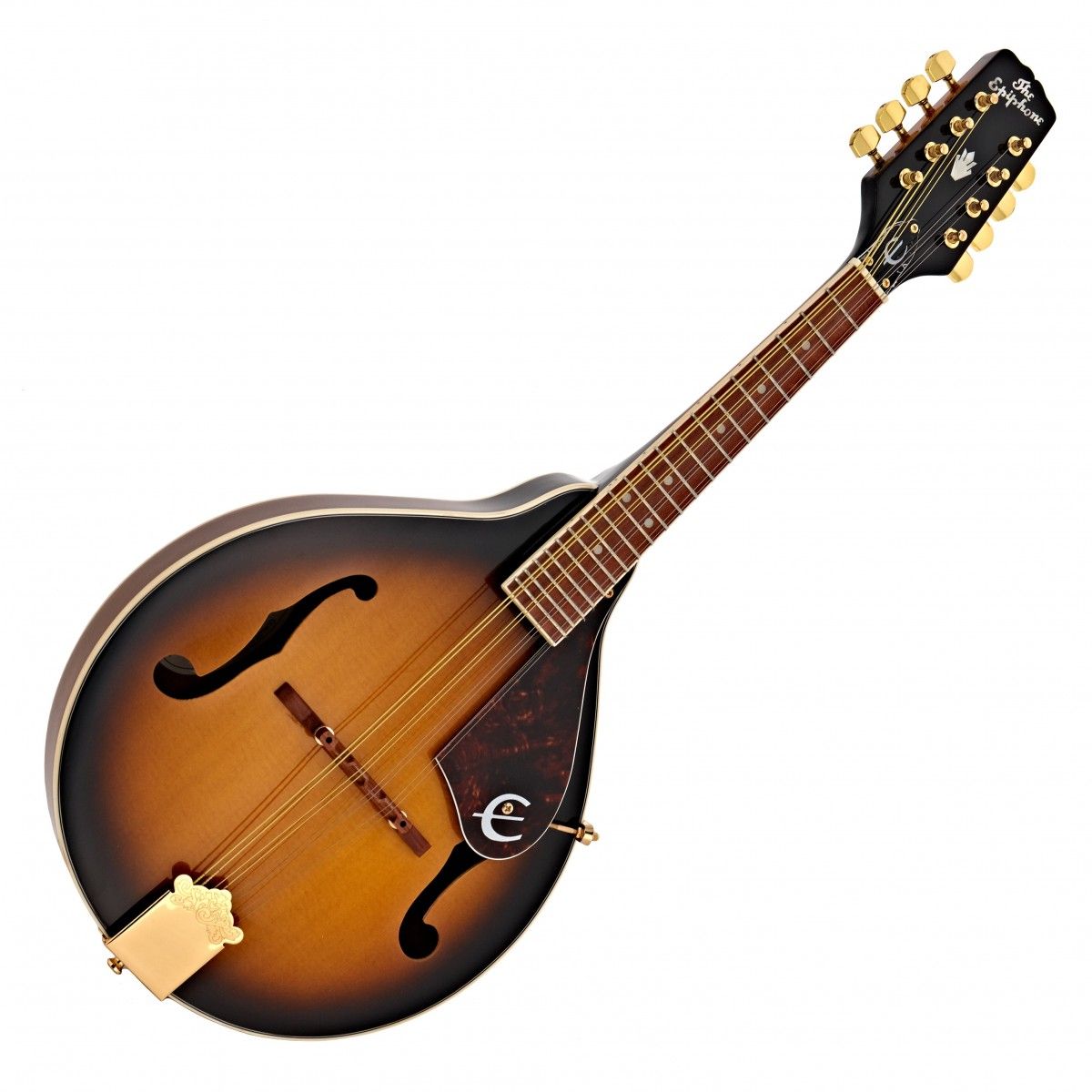
FEATURES: Traditional A-style body with classic finish
OTHER INFO: Excellent articulation stems from a spruce top
- Solid construction and good tonal quality
- Comfortable playability courtesy of a short scale length
- Higher price point for entry-level mandolin
When you click ‘Check Price’, you’ll see there are loads of great places to buy this item. Our personal favorite is Sweetwater for the US, and Thomann and Gear4Music for the UK & Europe.
They are the largest music retailers, with excellent customer service, competitive prices, really fast shipping, and the longest guarantees.
The professional musician who wrote this article combined many things,
from the product build, manufacturer’s reputation through to feedback
from other users, to create our famous TedScore™.
Historical Context and Origins
I will take you on a brief stroll through time, focusing on the rich histories that carved the paths for the banjo and the mandolin.
These instruments have more than strings in common; they both hold fascinating tales of evolution and cultural significance.
Mandolin History
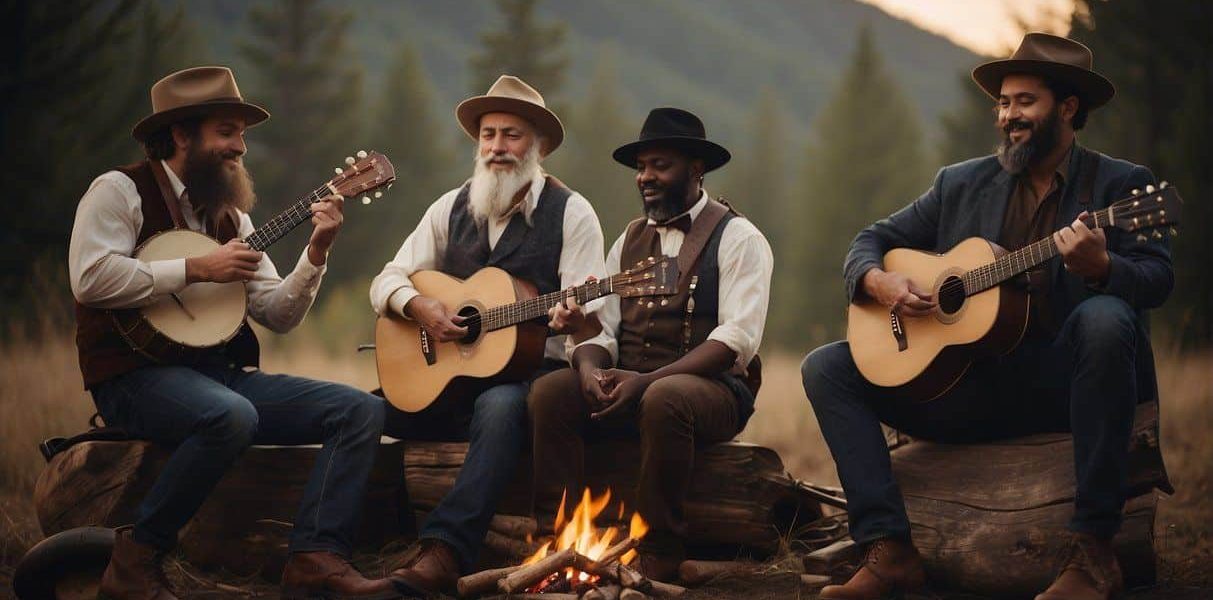
With its distinctive, curvy body and high-pitched twang, the mandolin owes its lineage to the flute family. It made my heart leap back to 18th-century Italy.
European artists embraced the mandolin, serenading city streets, and courtly balls until its presence dwindled after the Napoleonic Wars.
Its rebirth saw modifications by the Irish music, leading to the pear-shaped design I recognize today, complete with a bowed back.
Banjo History

Now, let’s talk about the banjo, an instrument with a rhythm that can’t help but make you tap your feet.
The banjo’s tale begins in West Africa, with roots tracing back to instruments like the akonting. The banjo was brought to America by enslaved Africans. It was born from a fusion of cultures, its design evolving into the familiar form you see today: a frame like a drum head stretched over a resonant gourd or chamber.
It has long been a centerpiece of folk and bluegrass music, entwining its strings deeply within the fabric of musical history.
Mandolin vs Banjo:
Comparison Recap
When I think about picking a mandolin or a banjo, it’s like choosing between two tasty treats. Both instruments have their appeal and play a special role in different kinds of music.
Mandolin:
Spritely sweet, with a sound that dances in the higher octaves.
It’s nifty for those dexterous fingers looking to master its course of double strings.
Great for high-pitched melodies and intricate playing.
Banjo:
It boasts a joyous twang that resonates with the heart of folk and bluegrass.
Its open-back or resonator design is fab for strumming bright and bouncing tunes.
Super for a bright, percussive sound with a rhythm that’s easy to pick up.
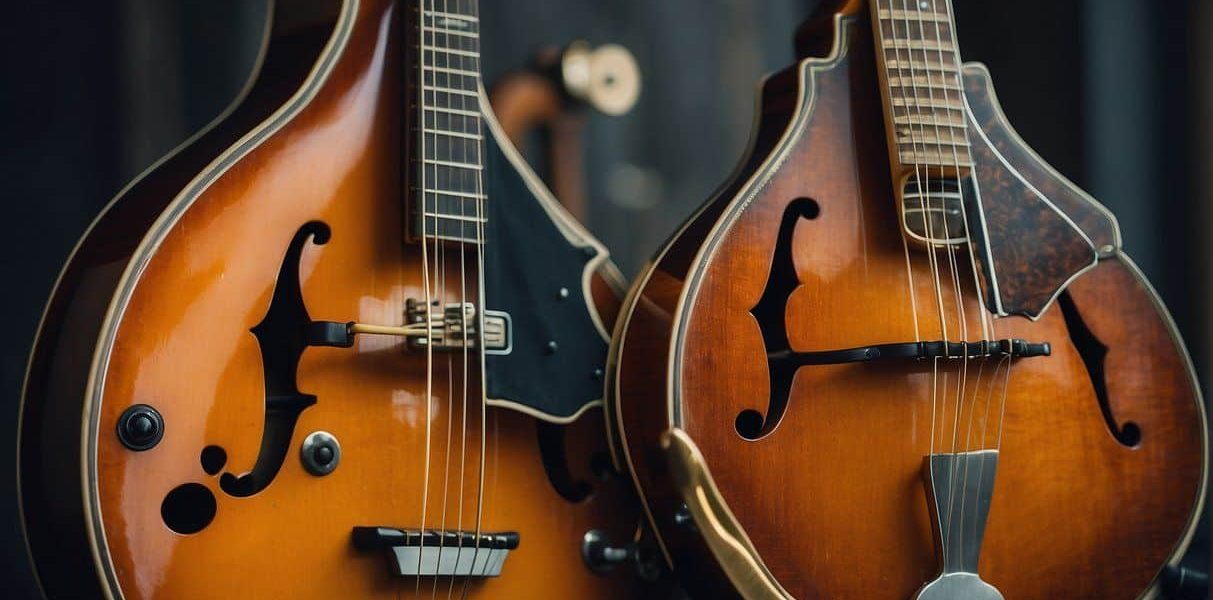
Whether my heart sways for the plucky twang of the banjo or the mandolin’s merry jingle, I adore how each instrument adds its splash of magic to tunes.
If you’re like me, itching to create music that feeds the soul, trust your instincts and pick the one that best matches your musical vibe.
Remember, it’s all about the joy of playing. So, whichever you prefer, have a blast making those strings sing!
Wait! Before you head out…
Get ready to pluck and strum your way to musical bliss with this comprehensive article on the Best Beginner Mandolins!
FAQ's
Mandolin and banjo chords are different. While both instruments use chords, they are played differently due to variations in tuning and string arrangements.
Playing the mandolin can be challenging. The versatility of the mandolin fretboard allows you to explore various musical styles and experiment with different melodies. When you play mandolin, a new world of musical expression opens up.
The difficulty of learning the banjo can vary from person to person. Banjo players are known for their skillful and rhythmic playing, captivating audiences with the instrument’s unique sound. Many dedicated musicians play banjos, mastering the intricate fingerpicking techniques and delivering soulful performances.











While I appreciate the effort put into compiling these recommendations, I must query the absence of handcrafted options in the mandolin section. Understandably, budget concerns predominate beginner instrument discussions. However, the tonal quality and playability of a finely crafted mandolin from a luthier can significantly impact a student’s learning curve and passion for the instrument. Perhaps a future article could explore these artisanal options?
Hey there, my daughter’s been bugging me for a mandolin after seeing one in a music video. Not looking to break the bank, but want something decent that’ll last. Between the Mandolin by Gear4music and the Epiphone, which would you say is more beginner-friendly and value for money? Thanks for any input!
love the banjo recs! gold tone is legit the best starter banjo out there. good call!
Totally agree, it’s a great banjo!
Hey Lewis , really enjoyed the piece on mandolins and banjos. Just wondering, are there any particular brands beside Epiphone and Gear4music that you’d recommend for beginners? Looking to start but on a tight budget here.